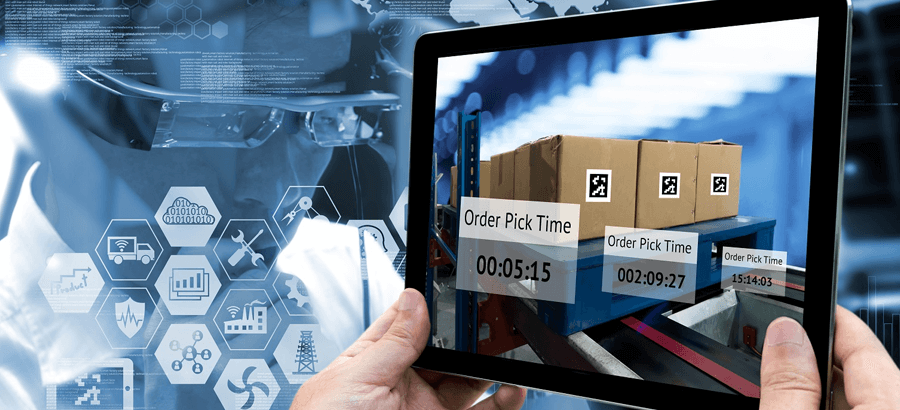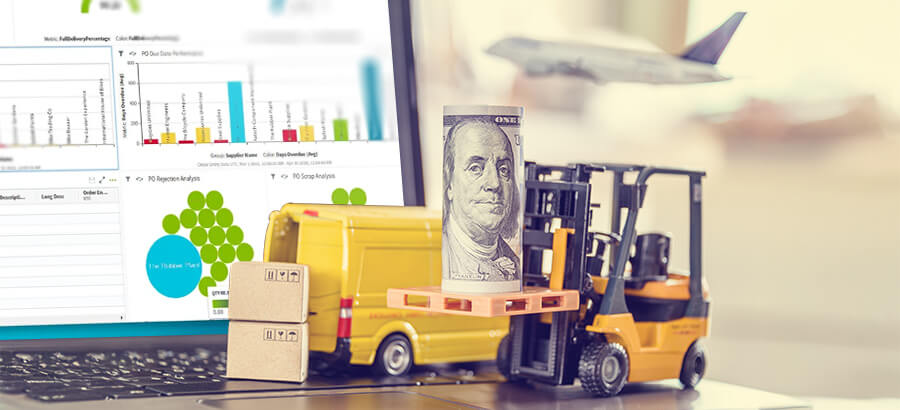In Part 1 of this blog I discussed how ERP software helps you better manage the “demand” side of the supply chain. Now let’s look at the “supply” side.
One of your most important “supply” functions is purchasing, and using an ERP system helps purchasing become more systematic and efficient:
You can track all of the details against purchase orders, such as pricing, quantities ordered and received, and expected vs. actual delivery dates. This data also lets you monitor supplier performance.
Within Purchasing, Contract Pricing speeds up Purchase Order entry and ensures accurate pricing. For each supplier/Stock Keeping Unit (SKU) combination you can pre-configure parameters such as price, expiry date, freight charges, shipping instructions, and more. When you enter a purchase order these contract parameters are automatically passed to the purchase order.
For long term blanket contracts with committed quantities and delivery schedules, Blanket Purchase Orders makes your purchasing more efficient and gives greater visibility. After you set up the overall Blanket purchase order, the system automatically suggests and creates individual purchase orders on a schedule to pull from the contract. You can easily look up any details of the contract, such as what quantity you have consumed so far, and past/future delivery schedules.
If your Purchasing requires an approval process, where some users request items but others approve and create purchase orders, then a Requisition System is useful. Users can enter and track requests, which automatically get forwarded for approvers to review. You can set different monetary value limits per approver. When the purchase order is approved the original requestor is notified.
Some companies have supply chains where certain trusted suppliers make frequent deliveries, which works well – except for all of the accompanying administrative tasks, such as entering supplier invoices and matching them to purchase order receipts. By using an Automatic Vouchering/Invoicing feature you can eliminate these manual steps. Essentially the system automatically creates Accounts Payable invoices to the trusted supplier based on purchase order receipts. This saves time for both you and your supplier.
Drop-shipping to customers directly from suppliers is common in many Distribution companies. Without an ERP system it’s a time-consuming manual process to open a separate sales order and purchase order and process both of them. With ERP you save time and reduce errors by having the system automatically create the purchase order from the sales order. The purchase order can also pull in your customer’s shipping address. Because ERP links the purchase order to the sales order, when you record the purchase order receipt it saves you a step by automatically changing the sales order status to “items shipped, ready to invoice”.
One of the most time-consuming aspects of Purchasing occurs even before placing the purchase order- it’s figuring out what to buy, and when:
Many buyers use spreadsheets or other simple systems to tediously plough through their stock keeping units, scrutinizing columns of data such as on hand quantity, open sales orders, open purchase order, past sales, future forecasts, etc. Does this sound familiar to you? Based on this data, buyers then do a “best guess” calculation of what to order. This is where an ERP’s Materials Requirements Planning (MRP) system can bring huge benefits and time-savings. MRP is essentially a “big calculator” that crunches ALL of the supply and demand data so that you don’t have to. Then it recommends a list of suggested new purchase orders, and suggested actions on existing purchase orders. You review the suggestions and click a button to automatically create new purchase orders and revise existing ones.
In addition, by ordering only the right inventory at the right time, MRP helps reduce inventory levels (which frees up cash), and increase service levels to customers (which increases revenue).
For manufacturers, production is a critical part of their supply chain. It’s important to make the right products at the right time, and to know your costs:
Many companies struggle to effectively manage work orders. An ERP’s Work Orders/Jobs system can help. When you open a job it automatically pulls in both the quantities and costs of the expected materials and labor. It also schedules the start and delivery date based on plant capacity. After you capture actual materials and labor used on the job, you can view any variances.
Jobs can be linked to purchase orders and sales orders, which saves time by eliminating some manual steps. For example, when you receive a purchase order linked to a job, the quantity and cost are posted directly to the job, instead of having to receive the goods into general inventory and then post them to the job. Similarly, when you receive a job linked to a sales order, it automatically updates the ship quantity on the sales order.
As with purchase orders, MRP is a huge help in managing jobs. It crunches all the supply and demand data and recommends a list of new jobs required, and revisions to existing jobs. After reviewing the suggestions you click a button to automatically apply the actions.
Effectively managing the “demand” and “supply” sides of the supply chain gives your company a competitive advantage. If you are having challenges managing your supply chain, it’s worth looking into whether an ERP system can help.






